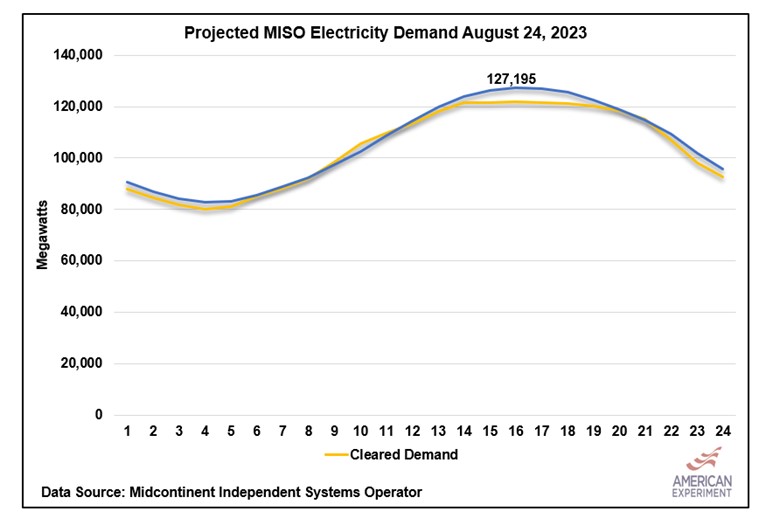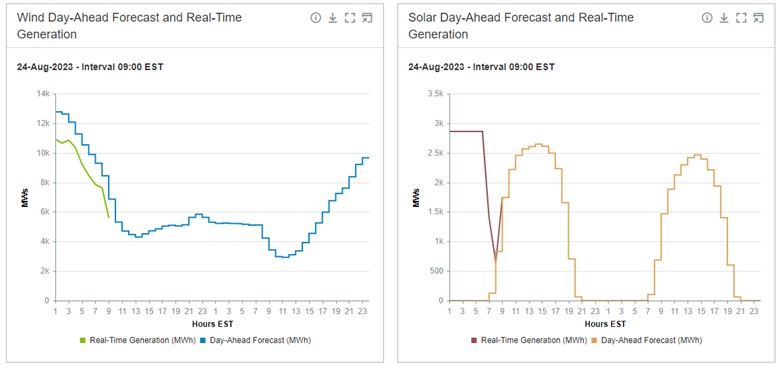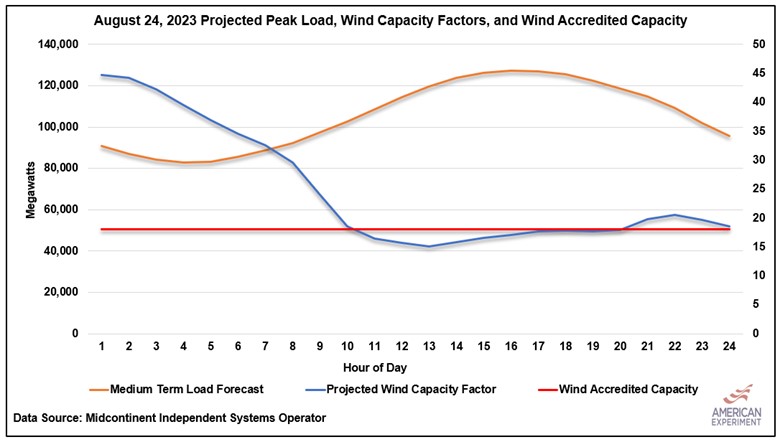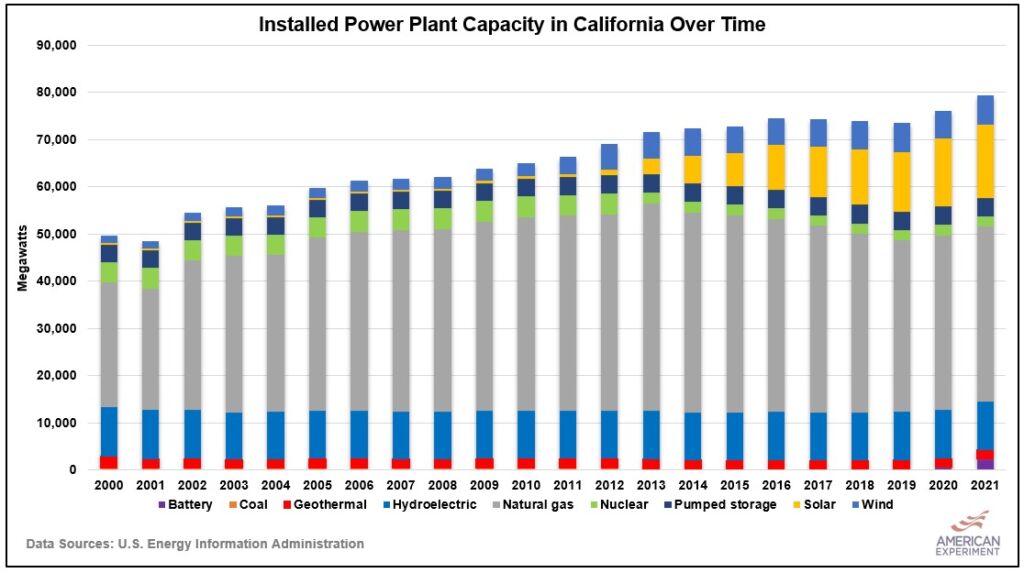Could be tight on the grid today
I’ve been hesitant to attempt any predictions about potential blackouts on the grid this year because I don’t want to become a Boy Who Cried Wolf. Also, it hasn’t felt like the conditions on the grid have merited breathless reporting on its status. Today might be different.
High temperatures on the Midcontinent Independent Systems Operator (MISO), the regional electric grid to which Minnesota belongs, have grid operators predicting we may be hitting the highest electricity demand of the year, known as the peak electricity demand. As a result, MISO has declared a Maximum Generation event, which allows access to capacity that is outside of the generator’s normal operating range in emergency circumstances.
Some of these emergency resources are called Load Modifying Resources, or LMRs, where consumers of electricity, usually large industrial consumers, voluntarily reduce their electricity consumption in exchange for lower prices to alleviate strain on the grid. It wouldn’t be surprising if we hear reports that iron mines in Northern Minnesota are asked to reduce production today to help keep the grid solvent like they were in 2021.
Other emergency resources involve load shedding, which is the nice grid operator way of saying initiating rotating blackouts. We probably won’t experience them today, but with the Max Gen being declared early this morning, we are at an elevated risk of that happening if the supply of LMRs is exhausted and demand is higher than forecasted.
What we’re looking at today
MISO’s load forecast for today is 127,195 megawatts (MW), which is higher than any of the other forecasted demand projections in the U.S. Energy Information Administration’s Hourly Grid Monitor Data for this summer. This means all hands will be needed on deck to meet demand in the later afternoon hours today.

MISO data suggest that wind generation is expected to fall from about 11,000 MW of generation in the early morning hours of the 24th to around 5,000-6,000 MW from 1 p.m. to 8 p.m. when demand is expected to be highest. Solar generation during these periods will be solid during the mid-morning to early afternoon before trailing off substantially around 5 p.m.

Despite falling wind output, it is still forecast to operate more or less as MISO has predicted for its summer seasonal accreditation process, where the grid operator assumes wind turbines will produce about 18.1 percent of their potential output during peak demand hours. Today, wind is forecast to operate at about this low level of productivity.

Earlier this week, MISO suggested that the grid could experience a new all-time high for electricity demand, breaking the record of 127 GW set on July 20, 2011. The difference between 2011 and today is not the temperatures; that was a hot summer, but the amount of reliable capacity on the electric grid.
An initial look at EIA state data profiles shows that Wisconsin and Minnesota had more dispatchable coal, natural gas, and nuclear capacity on their systems in 2011 than they do today, and other states likely follow suit. This means we have fewer supply resources to meet demand today than we did 12 years ago, which is essentially the same strategy California has taken for the past two decades. It’s not surprising we are starting to see similar results.

We may or may not have load shedding today, but as utility companies like Xcel Energy shut down their coal plants and pretend they can replace that power with solar panels and expensive battery pilot projects, the stability of the regional grid will grow more precarious with every subsequent coal plant that is prematurely retired.
In a rational world, more companies would seek the strategy recently announced by Duke Energy, where the company will only retire its Belews Creek coal facility once it has a new nuclear power plant to replace it. Unfortunately, a mix of subsidies for wind and solar and the Biden Administration’s onslaught of Environmental Protection Agency regulations will make the decision-making on our electric grid increasingly irrational.